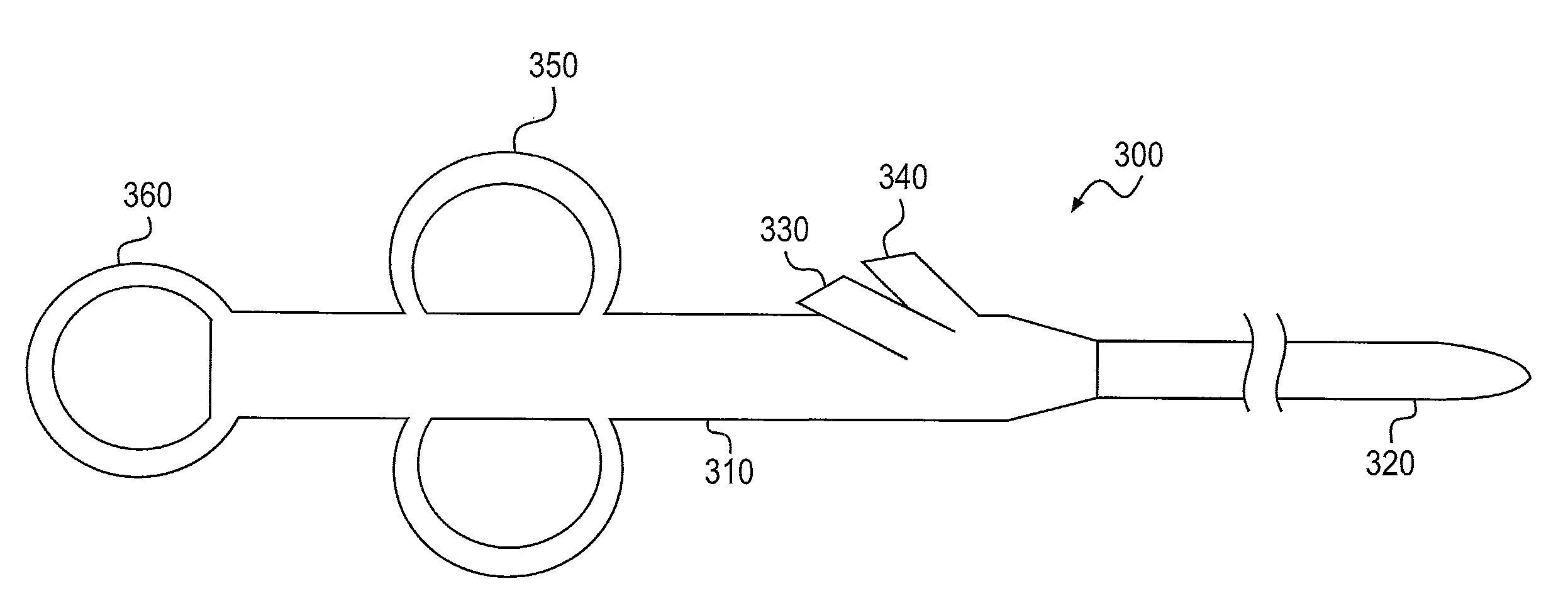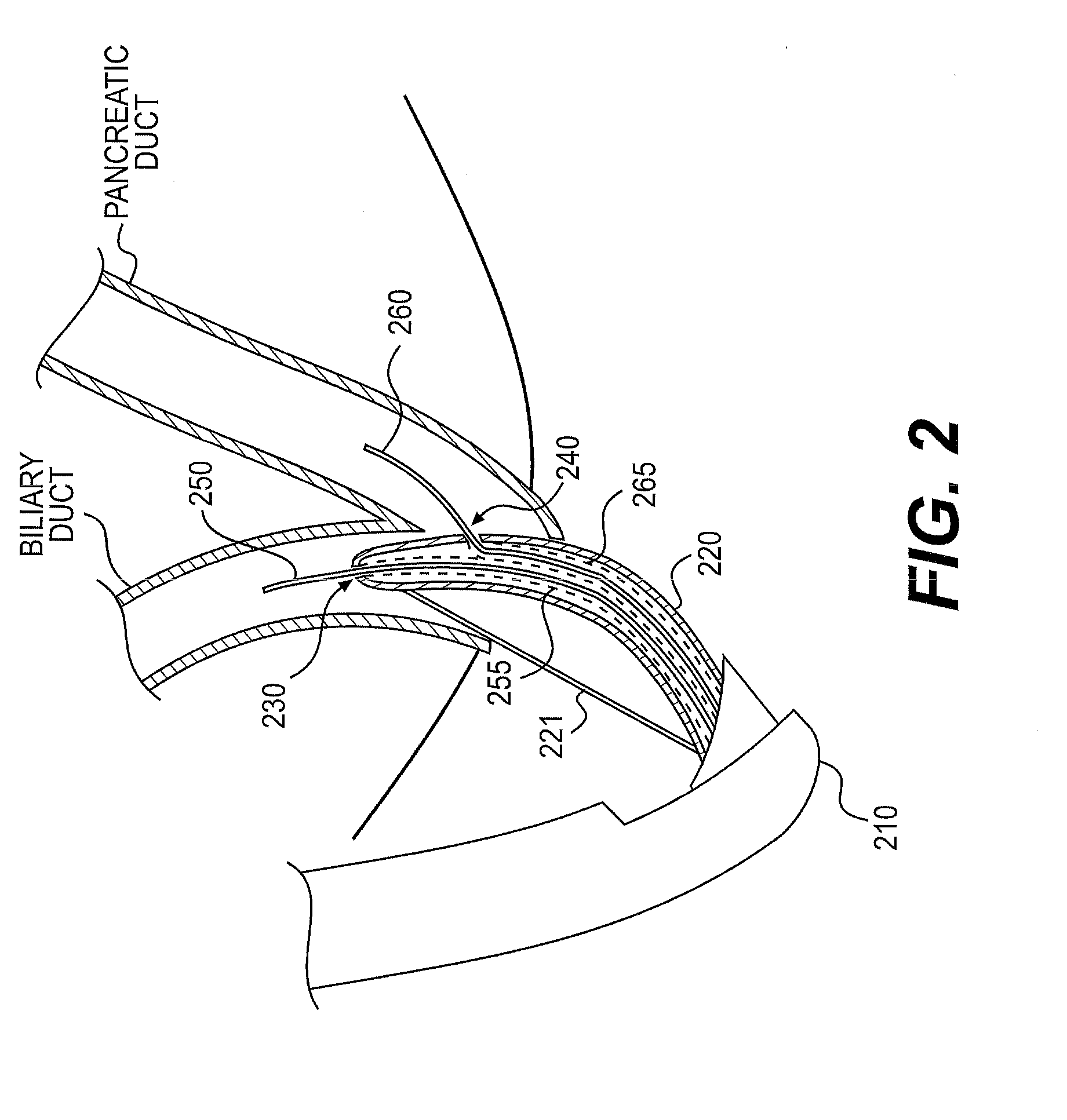Dual lumen pancreaticobiliary catheter and methods of cannulating the pancreaticobiliary system
a pancreaticobiliary and dual-lumen technology, applied in the field of medical devices, can solve the problems of difficult cannulations, high risk of tissue perforation or other damage, and significant challenges in cannulation of either the bile duct or the pancreatic du
- Summary
- Abstract
- Description
- Claims
- Application Information
AI Technical Summary
Benefits of technology
Problems solved by technology
Method used
Image
Examples
Embodiment Construction
[0018]Reference will now be made in detail to embodiments of the present disclosure, examples of which are illustrated in the accompanying drawings. Wherever possible, the same reference numbers will be used throughout the drawings to refer to the same or like parts. The term “distal” refers to the end farthest away from a medical professional when introducing a device in a patient. By contrast, “proximal” refers to the end closest to the medical professional when placing a device in the patient.
Overview
[0019]The pancreaticobiliary system, illustrated in FIG. 1, includes the pancreas (101), the pancreatic duct (102), the common bile or biliary duct (103), and the gallbladder (104). The pancreatic and biliary ducts join at the hepatopancreatic ampulla (105) (also known as the ampulla of Vader), which lies just behind the papilla (106). The papilla is a small opening that leads into the duodenum (107) to allow for the release of pancreatic juice and bile into the duodenum to aid in di...
PUM
 Login to View More
Login to View More Abstract
Description
Claims
Application Information
 Login to View More
Login to View More - R&D
- Intellectual Property
- Life Sciences
- Materials
- Tech Scout
- Unparalleled Data Quality
- Higher Quality Content
- 60% Fewer Hallucinations
Browse by: Latest US Patents, China's latest patents, Technical Efficacy Thesaurus, Application Domain, Technology Topic, Popular Technical Reports.
© 2025 PatSnap. All rights reserved.Legal|Privacy policy|Modern Slavery Act Transparency Statement|Sitemap|About US| Contact US: help@patsnap.com



